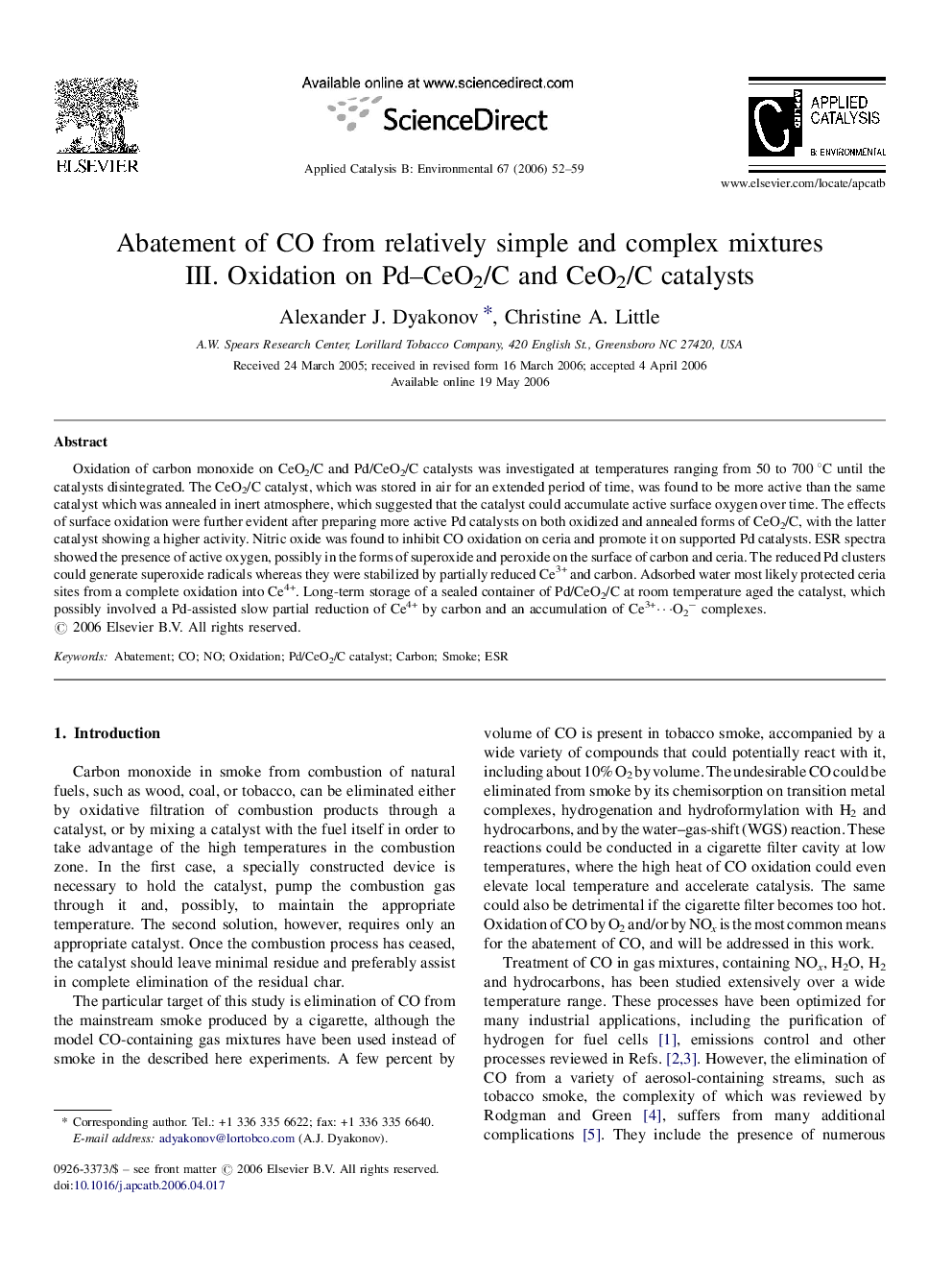| Article ID | Journal | Published Year | Pages | File Type |
|---|---|---|---|---|
| 48935 | Applied Catalysis B: Environmental | 2006 | 8 Pages |
Oxidation of carbon monoxide on CeO2/C and Pd/CeO2/C catalysts was investigated at temperatures ranging from 50 to 700 °C until the catalysts disintegrated. The CeO2/C catalyst, which was stored in air for an extended period of time, was found to be more active than the same catalyst which was annealed in inert atmosphere, which suggested that the catalyst could accumulate active surface oxygen over time. The effects of surface oxidation were further evident after preparing more active Pd catalysts on both oxidized and annealed forms of CeO2/C, with the latter catalyst showing a higher activity. Nitric oxide was found to inhibit CO oxidation on ceria and promote it on supported Pd catalysts. ESR spectra showed the presence of active oxygen, possibly in the forms of superoxide and peroxide on the surface of carbon and ceria. The reduced Pd clusters could generate superoxide radicals whereas they were stabilized by partially reduced Ce3+ and carbon. Adsorbed water most likely protected ceria sites from a complete oxidation into Ce4+. Long-term storage of a sealed container of Pd/CeO2/C at room temperature aged the catalyst, which possibly involved a Pd-assisted slow partial reduction of Ce4+ by carbon and an accumulation of Ce3+⋯O2− complexes.
